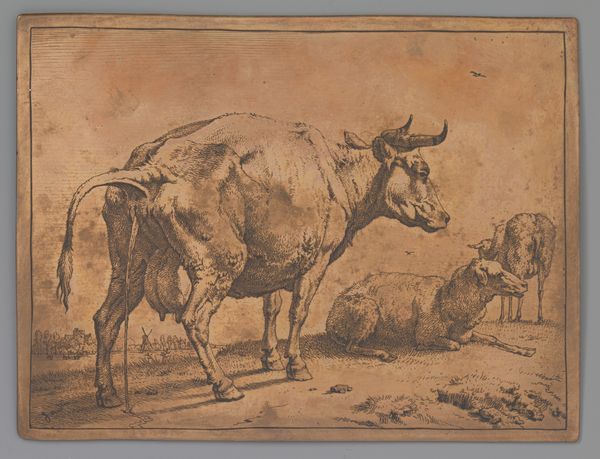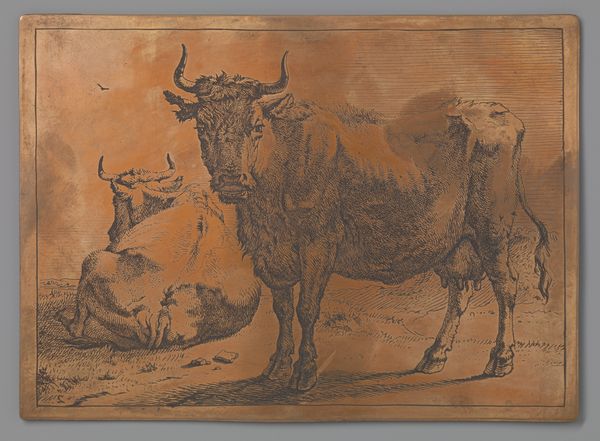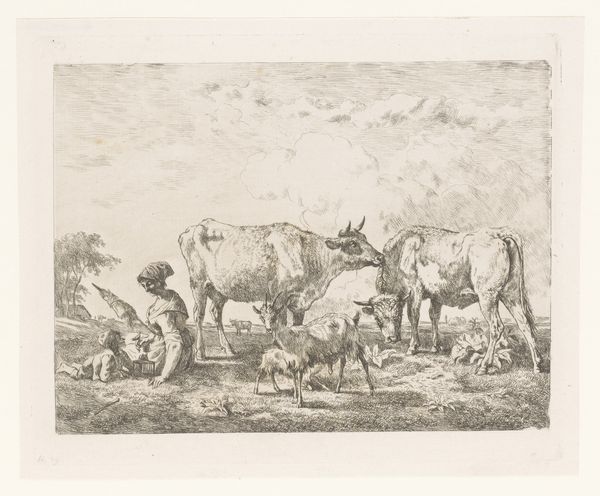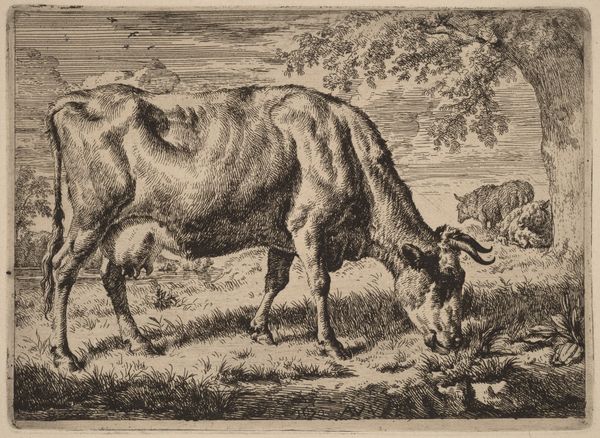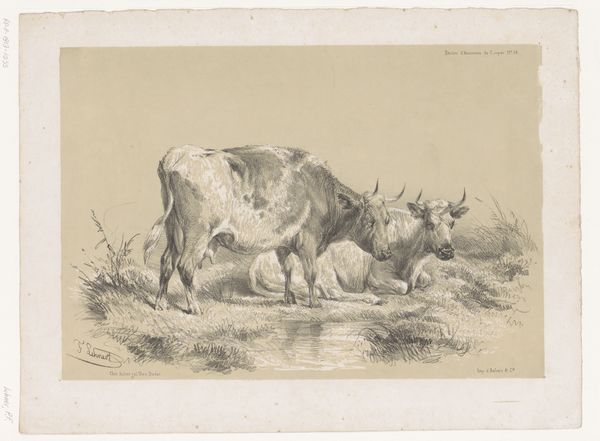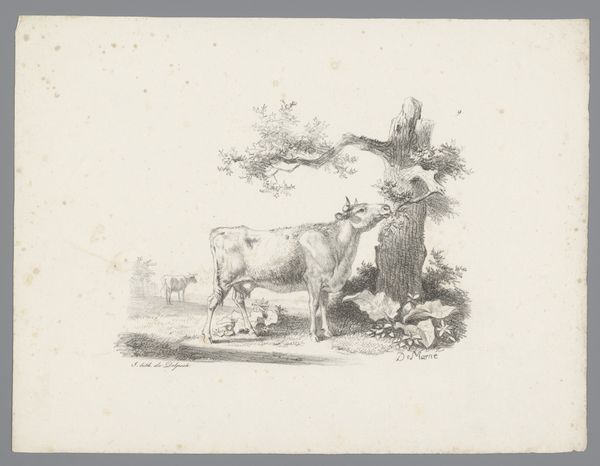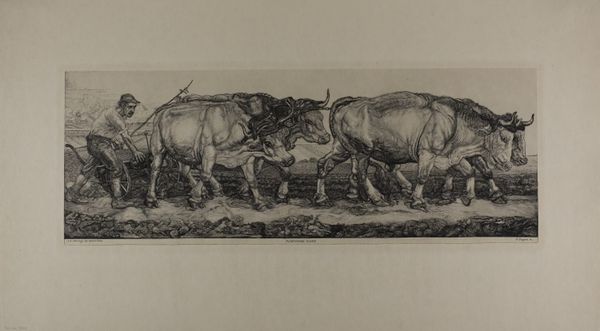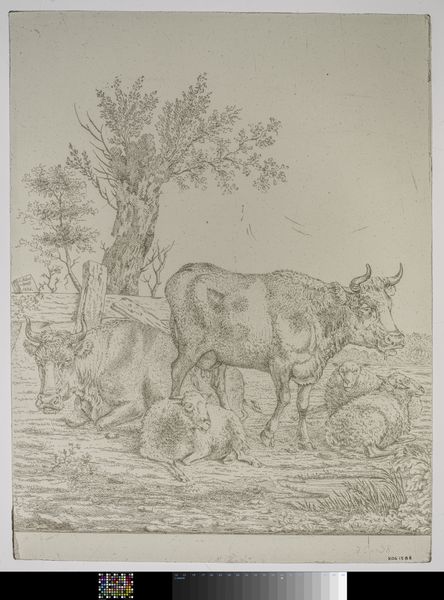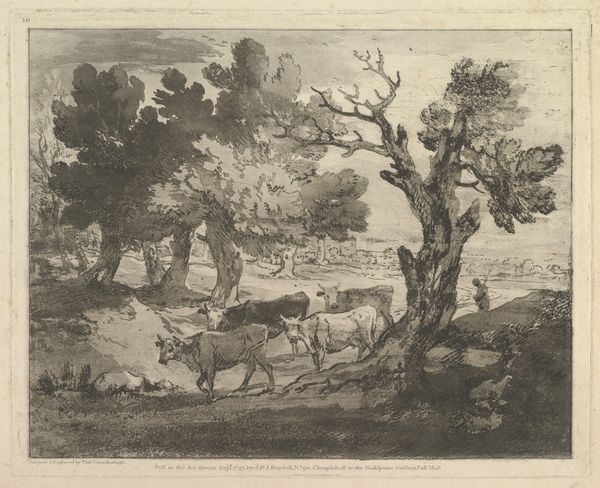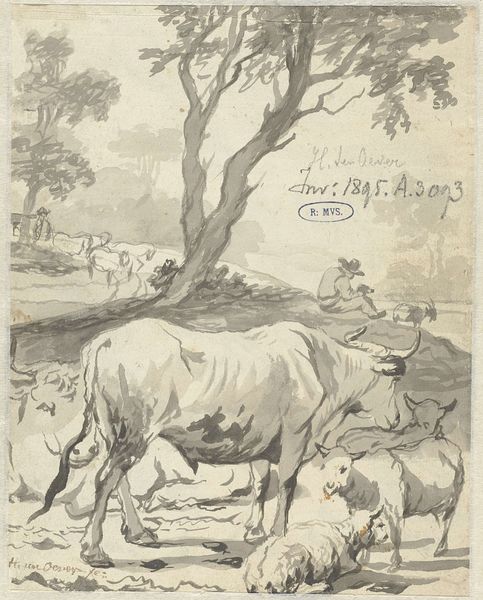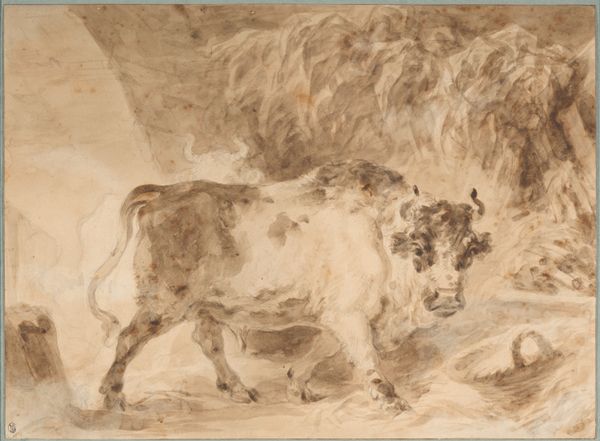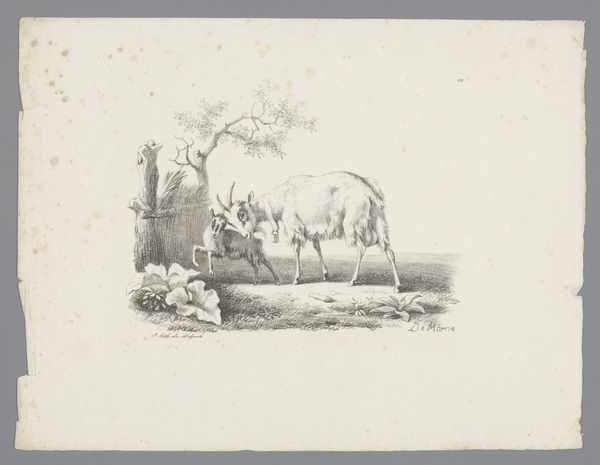
drawing, etching
#
drawing
#
dutch-golden-age
#
etching
#
landscape
#
figuration
#
genre-painting
Dimensions: height 207 mm, width 276 mm
Copyright: Rijks Museum: Open Domain
Editor: This is "Herder en herderin met hun vee" by Adriaen van de Velde, created in 1653. It looks like an etching, a type of drawing. The figures relaxing under the tree give it a peaceful, pastoral feeling. What do you see in this piece? Curator: It’s deceptively tranquil, isn't it? While seemingly a simple scene of rural life, consider its creation in the Dutch Golden Age. What societal shifts were happening then? Land enclosure, urbanization… These "genre paintings", though appearing to celebrate the simple life, often mask anxieties about displacement and the changing role of labor. Editor: So you're saying it's not just a nice picture of farmers? Curator: Exactly! Look closer at the figures: are they idealized? How does van de Velde represent the labouring class? Are these images contributing to a romanticized – and therefore potentially exploitative – view of rural life? We need to ask ourselves, who benefits from this idyllic image? Is it for the consumption of a wealthier, urban audience perhaps? Editor: I hadn’t thought about it that way. The etching’s small size and delicate lines almost made me miss those complexities. Curator: Scale is significant. Was this intended for public display or private contemplation? Think about who could afford art during this period, and what their interests might be. Even the medium – etching – is a clue. Its relative affordability allowed for broader dissemination of these images, shaping public perception. Editor: This has completely shifted how I see this artwork. I will never just glance over artworks, as if simply decorative, ever again. Thank you! Curator: Absolutely! Context is key to art's activism!
Comments
No comments
Be the first to comment and join the conversation on the ultimate creative platform.
